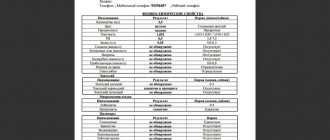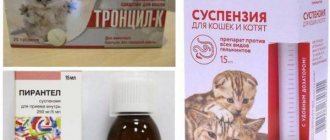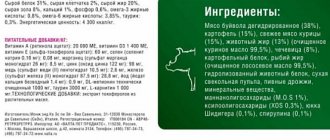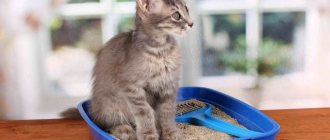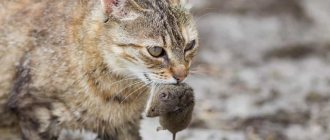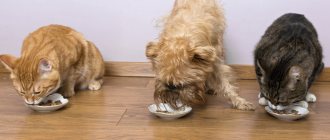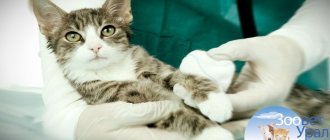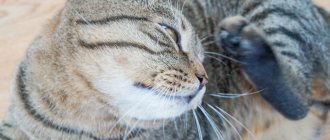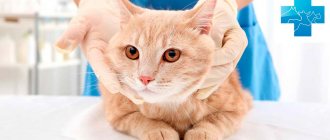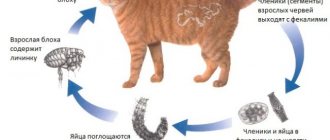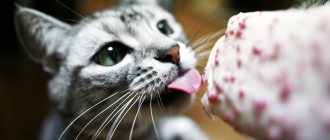When the kidney structures become inflamed, pyelonephritis occurs in cats. The disease has several varieties and is accompanied by severe pain, vomiting, and impaired urine output. The disease is dangerous due to complications such as kidney failure, kidney abscess, and sepsis. Therefore, at the first symptoms, the owner should have the animal examined by a doctor, who will prescribe medications, diet, herbal decoctions and give preventive recommendations. The prognosis depends on the timeliness of treatment.
According to the observations of veterinarians, kidney inflammation is diagnosed in cats 3 times more often than in dogs, and animals older than 7-8 years are at risk.
Why does the disease develop?
Pyelonephritis is an inflammation of the renal tubules, pelvis, calyces and parenchyma and affects any cat, regardless of breed. Occurs mainly when infected with bacteria - staphylococcus, streptococcus, E. coli. The viral type of the disease is caused by panleukopia. Main causes of the disease:
- urolithiasis disease;
- impaired urine output;
- entry and accumulation of toxic chemicals in the body;
- decreased immunity;
- hypothermia;
- helminths;
- inflammatory processes in other organs of the genitourinary system.
Common Causes of Kidney Disease in Cats
Let us list the main reasons leading to disturbances in kidney function.
Dietary:
- Unbalanced diet (excessive consumption of protein, phosphorus, salts).
- Insufficient water intake when feeding dry food.
Traumatic:
- Falling from height.
- Getting hit by a car.
- Hypothermia, frostbite.
- Heatstroke.
- Compression of the ureters by tumors.
Infectious:
- Bacterial infections.
- Viral diseases.
- Undertreated and neglected diseases of the genitourinary system.
Poisoning:
- Rat poisons.
- Chemicals.
- Detergents
- Medicines.
Congenital:
- Renal dysplasia (developmental pathology).
- Renal aplasia (absence of one or two kidneys).
Risk group
Those at risk for kidney pathology are:
- Elderly cats and cats. By the age of 9 years, the likelihood of this type of disease increases by 2 times.
- Cats that are obese and lead an inactive lifestyle.
- Representatives of some breeds: Abyssinian, Somali, Himalayan, Persian cats and exotics.
- Animals kept in damp rooms and drafts.
- Underweight cats, starving animals.
Varieties of the disease
Veterinarians divide feline pyelonephritis into the types shown in the table:
| Variety | Peculiarities |
| According to the nature of the course | |
| Spicy | Characterized by a sudden onset without a latent period |
| Chronic | Periods of remission alternate with phases of exacerbation |
| By shape | |
| Catarrhal | Has easy flow |
| Heals quickly | |
| Purulent | Characterized by the formation of pus in the renal structures |
| Considered the most dangerous and severe form | |
| Hemorrhagic | Occurs due to pathological fragility of the organ’s blood vessels |
| By etiology | |
| Primary | Inflammation appears directly in the kidneys |
| Secondary | Infection affects organs from other structures of the body |
Description of the disease
Primary pyelonephritis occurs as a result of damage to kidney tissue by pathogenic microflora. The secondary option is more common. It develops when inflammation and bacteria rise up. According to the type of course, this disease can be:
- hemorrhagic;
- catarrhal;
- purulent.
Depending on the form of the disease, it can be either acute or chronic. The development of this pathological condition most often occurs against the background of damage to the internal organs of the cat.
Stones and sand in the kidneys create conditions for the appearance of pyelonephritis. These elements cause local irritation of the tissues of the renal pelvis and a decrease in local immunity. Hypothermia and poor nutrition contribute to the development of pyelonephritis.
The problem can be caused by the ingress of opportunistic microflora from other organs, including enterococci, E. coli, streptococci, staphylococci, etc. In addition, stagnation of urine, including those caused by damage to the urinary tract and kidney tissue. Often, damage by pathogenic microflora occurs against the background of animal poisoning.
Symptoms: how to recognize pathology?
If an animal constantly drinks water and looks weak, this may indicate the development of an illness.
Feline pyelonephritis has the following symptoms:
- pain when urinating;
- change in urine color;
- frequent urge to urinate;
- lack of appetite;
- vomit;
- intestinal disorder;
- unquenchable thirst;
- shallow rapid breathing;
- increased temperature (hot ears, dry nose);
- heart rhythm disturbance;
- lethargy, refusal to play.
What are the dangers of kidney disease in cats?
The serious danger of kidney diseases is that many of them can develop and progress for years without a clear clinical picture. Some occur in a latent form, while others show vague signs. This prevents owners from sounding the alarm in a timely manner and veterinarians from diagnosing a serious illness.
Disturbances in the functioning of the kidneys are painless for the animal. The healthy part of the kidney takes on the load from the diseased area. Up to a certain point, the paired organ copes with the pathology on its own. When the kidneys can no longer cope with the increased load, the first symptoms appear. Usually by this time most of the animal’s organ has irretrievably died and it cannot be saved.
Important!
To promptly identify kidney pathologies, undergo a full preventive examination by a veterinarian once every six months.
Treatment: how to act correctly?
Drug therapy
The medications are prescribed by a doctor; self-medication can cause the death of the animal. Feline pyelonephritis is treated with the medications shown in the table:
| Pharmgroup | Medication |
| Antibiotics | "Bitsilin" |
| "Amoxiclav" | |
| "Ampicillin" | |
| "Streptomycin" | |
| "Gentamicin" | |
| Sulfonamides | "Urosulfan" |
| "Sulfadimethoxine" | |
| "Sulfene" | |
| Antispasmodics | "No-Shpa" |
| "Papaverine" | |
| Glucocorticosteroids | "Prednisolone" |
| "Hydrocortisone" | |
| Saline solutions | Sodium chloride |
| "Reopoliglyukin" |
Therapeutic diet
In case of kidney diseases, economy class dry food should be excluded from the animal’s menu, since after eating it the animal is forced to drink a lot of water, which increases the load on the urinary system.
For kidney diseases, it is recommended to adhere to proper nutrition or buy special food, for example, Purina Veterinary Diets.
Treatment of pyelonephritis in cats includes following a diet. It is advisable to give your cat low-fat cottage cheese, kefir, boiled or stewed vegetables without salt or seasonings. Among the foods recommended are those that are indicated for kidney diseases:
- Purina Veterinary Diets;
- "Monge Grain";
- "Farmina";
- "Hills";
- Royal Canin Renal.
Phytotherapy
It is recommended to treat feline pyelonephritis with herbal decoctions. They should be drawn into a syringe without a needle and poured into the mouth in small portions with breaks so that the animal has time to swallow the broth and does not choke. Horsetail, rose hips, and calendula inflorescences are effective. Preparation:
- Take 5 g of any plant, pour 200 ml of hot water.
- Let it brew for 15-20 minutes, cool, filter.
- Dilute the resulting purified decoction with boiled water.
- Give the animal 10-15 ml of water 2-3 times. per day.
Drugs for the treatment of pyelonephritis
Treatment of this pathological condition in cats involves the use of a number of medications. First of all, antibiotics are selected to suppress the pathogenic microflora that causes inflammatory damage to the kidneys. Antimicrobial drugs commonly used for this disease include:
- Carbenicillin.
- Penicillin.
- Amoxilin.
- Salfen.
- Sulfadimethoxine.
The dose of the drug is selected for the animal individually. These medications must be used for at least 7 days. If necessary, the duration of antibiotic use is increased to 2 weeks. To eliminate pain, antispasmodics are prescribed. You can use No-Shpu and Baralgitas. Perinephric blocks may be prescribed.
To improve the general condition of the animal, infusion therapy is required, involving the use of solutions of calcium chloride and glucose. In case of purulent kidney damage, corticosteroids can be introduced into the drug therapy regimen. In addition, diuretics are prescribed for this pathological condition. You can also give decoctions of medicinal herbs that facilitate the process of urination. Compositions based on:
- juniper berries;
- calendula;
- birch buds;
- rosehip.
In addition, vitamin injections are prescribed to maintain the body during acute pyelonephritis. The duration of therapy depends on the severity of the animal's condition.
What are the complications?
If you miss the symptoms of the disease and do not start treatment, consequences develop, such as:
In the case of an advanced form of pathology, complications develop, such as sepsis, which can lead to dire consequences.
- Kidney failure. A condition that threatens the life of the animal, as it provokes a failure of water-salt metabolism and the accumulation of toxins.
- Abscess. It is characterized by the melting of organ structures due to the accumulation of pus.
- Sepsis. If the bean-shaped organ cannot remove urine and toxins, they accumulate in the body and spread throughout all systems, causing organ dysfunction. May be fatal.
Symptoms of pyelonephritis
Vivid signs of the disease appear only during the acute course, as well as during the period of exacerbation of the chronic form of the pathology. The development of pyelonephritis is indicated by the appearance of apathy and fever in the animal. The cat is urinating more frequently. There may be clots of pus or blood in the urine. The process of urination causes increased pain in the animal, so the cat may become restless and meow pitifully.
When the belly or back is touched, the pet may begin to struggle or try to run away, as this leads to increased pain. Often, during the acute phase of pyelonephritis, an animal experiences a decrease in appetite. Diarrhea may occur. The cat vomits periodically.
These effects often cause dehydration. Your cat may be constantly thirsty. The development of pyelonephritis is indicated by increased respiration and pulse. The progression of this disease is extremely dangerous, as it can cause the development of kidney failure in the animal and its death.
Prevention and prognosis
Prediction depends on the age of the animal, timely initiation of therapy, and the state of immunity. If the inflammation was diagnosed on time, the prognosis is favorable and complete recovery occurs. In advanced cases, when complications develop, death can occur. To avoid pyelonephritis in cats, it is recommended to choose the right food, avoid frequent consumption of fish, especially raw fish, strengthen the pet’s immunity, and ensure that it is not in a draft or overcooled. It is necessary to regularly expel helminths and promptly treat diseases of the genitourinary system.
Diagnostics
If there is a suspicion of pyelonephritis in a cat, the veterinarian will prescribe an examination for an accurate diagnosis and treatment. It is worth noting that some symptoms of pyelonephritis are similar to those of nephrosis, polycystic kidney disease or nephritis. Therefore, the specialist’s task is to exclude these diseases.
Diagnostic methods:
- general blood analysis;
- blood chemistry;
- Ultrasound of the abdominal cavity and urinary organs;
- analysis of urine from the bladder and renal pelvis for the presence of bacteria;
- kidney biopsy;
- radiography;
- excretory urography.
Diagnostic methods to confirm the presence of the disease are determined by the veterinarian depending on the complexity of the symptoms and the pet’s individual medical history. Also, the choice of examination method depends on the conditions of the veterinary clinic and the availability of special diagnostic equipment. If the examination reveals stones in the kidneys or bladder, it is necessary to get rid of them, and only then begin treatment. Otherwise, the therapy will not give a positive result.
The prognosis for treatment of pyelonephritis depends on the severity of the disease, the age of the cat and the timeliness of veterinary care.
Damage to kidney filters (glomerular disease)
The glomerulus (the kidney's filtration mechanism) may be involved in feline kidney disease. Early on, we don't expect any signs of illness from this condition, but since glomerular disease can be caused by infections such as FIP/FeLV or cancer (among other things), time can make problems worse. Over time, inflammation in the glomerulus of the kidney damages the surrounding kidney tissue, creating chronic kidney disease, which makes your cat feel sick.
Chronic renal failure (CRF) a visible clinical manifestation of renal dysfunction caused by the irreversible death of nephrons in progressive kidney disease. This is usually observed with a loss of 75% of the functional mass of the kidneys and is manifested by a multi-symptom complex, reflecting the participation in this process of almost all organs and systems of the sick animal.In retrospective studies, where cats over 7 years of age predominated, no sex or breed predisposition was identified [1].
The experience of our veterinary center confirms the data given by Di Bartola. Among our patients, animals older than 7 years also predominated; males and females were encountered with equal frequency.
In veterinary clinics, cats with chronic renal failure among all patients range from 10 to 30% [3]. In our clinic, cats with chronic renal failure in the therapeutic department account for about 28-30% of the total number of patients.
Etiology
CRF develops where there is long-standing, irreversible damage to the kidneys, as a result of which they lose their excretory (removal of metabolic products), regulatory (maintaining the volume and composition of fluid in the body) and endocrine functions (production of the hormones renin, erythropoietin, etc.).
The causes of chronic renal failure are primary or secondary renal processes, which, as a rule, continue for a long time and lead to the final stage - a shriveled kidney. Such as:
- polycystic kidney disease (hereditary disease, mainly in Persian and exotic cats),
- inflammatory kidney diseases (pyelonephritis, glomerulonephritis),
- metabolic diseases (diabetes mellitus in cats and dogs, amyloidosis),
- urolithiasis disease,
- congenital underdevelopment of the kidneys (hypoplasia)
- kidney tumors - for example, lymphoma,
- other causes, such as kidney damage from toxins.
In the photo: Polycystic kidney disease, kidney disease in cats. Examination with Omnipaque 300 contrast agent.
However, in most cases, the exact cause of the disease in cats is unknown.
Pathogenesis
In the pathogenesis of chronic renal failure, regardless of renal pathology, a decrease in renal function occurs due to 3 main mechanisms:
- decrease in the number of functioning nephrons,
- a significant decrease in filtration rate in each individual case without reducing the number of nephrons,
- combinations of the first and second mechanisms.
The consequence of each of these factors will be a decrease in the glomerular filtration rate - the rate at which substances are filtered from the blood through the glomeruli of nephrons. A decrease in the number of functioning nephrons gradually leads to a significant change in biochemical blood parameters and severe metabolic disorders.
The development of uremia is noted with the accumulation of potential toxins and products of protein metabolism: urea (more than 10 mmoll [2]), creatinine (more than 179 mmoll [3]), uric acid.
According to modern concepts, uremic intoxication syndrome is not caused by the retention of nitrogenous wastes, but mainly by the accumulation in the blood of medium molecules - protein substances with a molecular weight of 300 to 500 daltons, formed as a result of a violation of the homeostatic function of the kidneys [5].
An increase in the products of nitrogen metabolism in the blood - osmotically active substances - increases the osmotic load on the remaining nephrons. These substances, having been filtered in the glomeruli, are reabsorbed in the tubules to a lesser extent than normal. The unreabsorbed part is excreted in the urine along with an appropriate amount of water. This is called osmotic diuresis. Due to osmotic diuresis, the total excretion of water by the kidneys not only remains normal, but can even be increased (polyuria), despite a significant decrease in glomerular filtration. The density of urine decreases and becomes stable at the level of 1.008-1.015, which corresponds to the density of blood and indicates a decrease in the concentrating ability of the kidneys.
Polyuria causes the body to lose water (dehydration). With dehydration, renal blood flow decreases, glomerular filtration worsens and chronic renal failure worsens. With chronic renal failure, the metabolism of calcium and phosphorus is disrupted. As chronic renal failure progresses, calcium excretion in the urine and its absorption in the intestine decrease, and the phosphate content in the blood increases. These disorders are accompanied by changes in bone tissue - osteodystrophy. Disorders of electrolyte metabolism lead to changes in the neuromuscular system, accompanied by adynamia, paralysis and other disorders. CRF is accompanied by changes in all types of metabolism. In the early stages, energy metabolism is disrupted - energy consumption exceeds the capacity for energy production.
Stages of kidney failure in cats
1. Latent stage of kidney disease (early).
Characterized by a decrease in glomerular filtration rate, but this does not affect the general condition of the animal and the concentration of creatinine in the blood
2. Initial stage of chronic renal failure.
Moderate azotemia is observed, the concentration of creatinine in the blood serum is up to 250 µmol/l. The progression of this stage of the disease can last several months and is accompanied by decreased appetite, loss of body weight, and periodic vomiting. Compensation can cause hyperparathyroidism, a decrease in the concentrating ability of the kidneys.
3. Conservative stage of chronic renal failure.
There is a further decrease in the glomerular filtration rate, high uremia develops, the concentration of creatinine in the blood serum is 252 - 440 µmol/l. At this stage, polydipsia is characteristic; clinical signs of dehydration, anemia, gastrointestinal dysfunction, and metabolic acidosis may appear.
4. Terminal stage of chronic renal failure.
The terminal stage of chronic renal failure is indicated not only by high levels of urea and creatinine in the blood, but also by hypocalcemia (up to the development of seizures), symptoms of uremic encephalopathy, hyperphosphatemia, a picture of decompensated uremic acidosis (Kussmaul breathing), interstitial pulmonary edema. With prolonged severe azotemia, life is impossible without dialysis or kidney transplantation [2].
According to Douglas Slatter, there are 3 phases of renal failure.
1st phase. Kidney diseases that primarily damage the kidney tissue (glomerulonephritis, urolithiasis, hypertension). Does not have a significant effect on the life of the animal and does not affect the concentration of creatinine in the blood.
Phase 2. Renal failure with minor clinical manifestations. Creatinine level 179 – 354 µmol.
Phase 3. Uremia, with obvious clinical manifestations and blood creatinine over 354 μmol.
In our practice, we conventionally divided chronic renal failure into three stages according to the level of creatinine in the blood:
1. Initial stage - when the creatinine level does not rise above 250 µmol - in such animals there may be no clinical manifestations of the disease, or they are insignificant. There were 38% of such cats over the past year (of the total number of cats suffering from chronic renal failure).
2. Medium – blood creatinine level up to 500 µmol. There are obvious clinical signs of the disease (polyuria, polydipsia, gastrointestinal dysfunction, anemia, exhaustion). There are about 28% of such cats.
3. Terminal – creatinine level above 500 µmol. A full range of clinical signs, including lethargy. Such cats make up 34% of the total number of chronic renal failure patients.
Clinical signs
Anorexia, depression
Vomiting due to hyperacid gastritis, polydipsia, polyuria. Gingivitis with ulcers on the tip of the tongue. Anemic mucous membranes. Secondary hyperparathyroidism with softening of the bones of the facial skull is observed.
Constipation, dehydration
Upon palpation, you can detect a change in the size of the kidneys; most often they are reduced; if chronic renal failure is caused by amyloidosis, hydronephrosis, tumors, an enlargement of the kidneys is observed.
Uremic encephalopathy: coma, tremor, epileptiform seizures, teteany.
Arrhythmia bradycardia. Increased blood pressure, hypertrophy of the left half of the heart. Acidosis causes deepening of breathing.
Immune depression, soft tissue calcification, bleeding disorders, insulin resistance (increased blood glucose levels), pancreatic dysfunction (hyperamylasemia). Thinning hair, poor coat quality.
Lethargy is observed in cats with end-stage chronic renal failure.
Diagnostics
CRF can be diagnosed in an animal by clinical symptoms, but they can also be non-specific, because Depression, lethargy, lack of appetite and weight loss are observed in many diseases. Laboratory tests are required to confirm the diagnosis. In our clinic, we most often use biochemical and clinical blood tests and urine tests, and in many cases we perform ultrasound examination of the kidneys.
Blood chemistry
Elevated levels of urea, urea nitrogen and creatinine are determined. The determination of creatinine in the blood is more important than the determination of urea, because the level of creatinine is not influenced by diet or the level of protein breakdown.
You can also determine the glomerular filtration rate: the volume and concentration of creatinine in urine per day is determined and correlated with the level of creatinine in the blood serum.
Symptoms of lack of appetite are observed when the urea level is more than 25 mmoll; when the urea content is 40 mmoll (the norm is 5-10 mmoll), the animal will experience severe depression and anorexia.
Insufficient excretion of limiting phosphorus leads to an increase in its level in the blood, while the calcium level falls (with moderate chronic renal failure, the phosphorus level is no more than 2.1 mmoll, with severe chronic renal failure more than 3.2 mmoll).
The release of calcium from bones when phosphorus levels are high leads to soft tissue mineralization. Most cats with chronic renal failure exhibit hyponatremia or hypokalemia, hypoalbuminemia, and hyperamylasemia. Non-regenerative anemia, hypokalemia. Isosthenuria, urine density 1008 and below.
Clinical blood test for cats and dogs
The following picture prevails: non-regenerative anemia caused by a decrease in the production of erythropoietin by the kidneys and a decrease in the lifespan of circulating red blood cells, leukocytosis with lymphopenia and thrombopenia.
Animal urine analysis
Isosthenuria (osmolarity is usually below 1015), pH changes to the acidic side, proteinuria, inactive urinary sediment, rarely glycosuria.
Ultrasound examination, ultrasound
Increased echogenicity of the renal parenchyma, blurring of the boundaries of the cortical and medial layers, reduction in the size of the kidneys.
X-ray examination
A decrease in the size of the kidneys is determined to be less than 2.5 times the length of the body of the second lumbar vertebra (L-2). If overt hyperparathyroidism is observed, a decrease in bone density, especially in the maxilla, and soft tissue calcification are visible.
Differential diagnosis
Differentiate from acute renal failure (ARF), prerenal and postrenal uremia.
In acute renal failure, there is no anemia, polyuria and polydipsia, or kidney shrinkage, but there are anamnestic signs of an extrarenal underlying disease.
Glomerulonephritis is combined with severe proteinuria, while the kidney size is normal, with a tendency to edema.
In case of pyelonephritis, urine analysis shows active urinary sediment, pyuria. The kidneys may be irregularly shaped, and the pelvis and ureters are dilated on ultrasound. Blood leukocytosis.
For polydipsia without urea retention, Diabetes mellitus, Dibetes isipidus centralis and renalis, psychogenic craving for drinking.
During histopathological examination of the kidneys (biopsy) in acute renal failure, the following is observed:
- acute tubular necrosis
- acute inflammation
For chronic renal failure:
- a significant part of the normal parenchyma is replaced by fibrous tissue,
- extensive tubular atrophy,
- calcification of basement membranes,
- chronic inflammation (chronic interstitial nephritis),
- glomerulosclerosis
Treatment
Most often, kidney disease in cats is diagnosed without a clear idea of its cause, so treatment is aimed at eliminating the main symptoms. Goals of therapy:
- maintaining quality of life,
- slowing down the degeneration of damaged kidneys and the progression of chronic renal failure,
- reduction of azotemia,
- reduction of proteinuria,
- reducing the risk of hypertension.
Anorexia and dehydration: intravenous or subcutaneous administration of solutions of 0.18% sodium chloride + 4% dextrose. The required volume of administered solutions is calculated based on the need for 50 mlkg24 hours
Systemic hypertension: ACE inhibitors or calcium channel blockers (enalapril 0.25-0.5 mgkg per os, every 12-24 hours, amlodipine 0.10-0.25 mgkg per os, every 24 hours).
Metabolic acidosis: sodium bicarbonate 8-15 mgkg per os, every 8-12 hours.
Hypokalemia: Hartmann's solution, Panangin.
Hyperphosphatemia: low phosphorus diet (Royal Canine renal, Hill's kd, Eucanuba renal, Pro Plan NF), phosphorus content no more than 0.6% of the daily diet. Administration of drugs that bind phosphorus into the gastrointestinal tract: aluminum hydroxide 30-60 mgkg per day with food.
Weight loss: high-calorie diet, appetite stimulation with various taste attractants, parenteral nutrition, nasoesophageal tube
Proteinuria and hypoalbumemia: ACE inhibitors enalapril 0.5 mgkg per os, every 12-24 hours - reduce protein excretion by the kidneys when they are damaged. A diet rich in omega 3 polyunsaturated fatty acids.
Immune suppression: annual vaccination and protecting the animal from potential sources of infection.
Decreased appetite and vomiting: a diet with a reduced level of protein with a urea level of more than 40 mmol, H2 receptor antagonists (famotidine 0.5 mgkg per os, every 12-24 hours, metoclopramide 0.2-0.4 mgkg per os, subcutaneously, every 6-8 hours.
Anemia: with hematocrit below 18%, erythropoietin 25-100 units kg, subcutaneously 1-3 times a week, ferrous sulfate 5-20 mg kg per day per os.
conclusions
1) CKD is the irreversible progressive destruction of kidney tissue as a result of diseases that, in the absence of dialysis or kidney transplantation, lead to the death of the patient.
2) Cats with chronic renal failure may not have symptoms until the glomerular filtration rate becomes very low.
3) The consequence of chronic renal failure is a violation of the metabolism of water and sodium, calcium and phosphorus, anemia.
Literature
1. Di Bartola, SP, Tarr, MJ and Benson, MD: Tissue distribution of amyloid deposits in Abyssinian cats with familial amyloidosis. J. Comp. Pathol. 96:387-398, 1986.
2. Candler EA, Gaskell CJ, Gaskell RM “Feline medicine and therapeutics”, Blackwell Science, 1994, p. 118-121
3. Douglas Slatter “Small animal surgery”, Saunders, 2003, p. 1562-1616
4. Paula Hotston Moore “Fluid therapy for veterinary nurses and technicians” Butterworth Heinemann, 2004, p. 11-41
5. Nephrology. Ed. E. M. Shilova. M.:GEOTAR-Media, 2007, p. 599-612.
